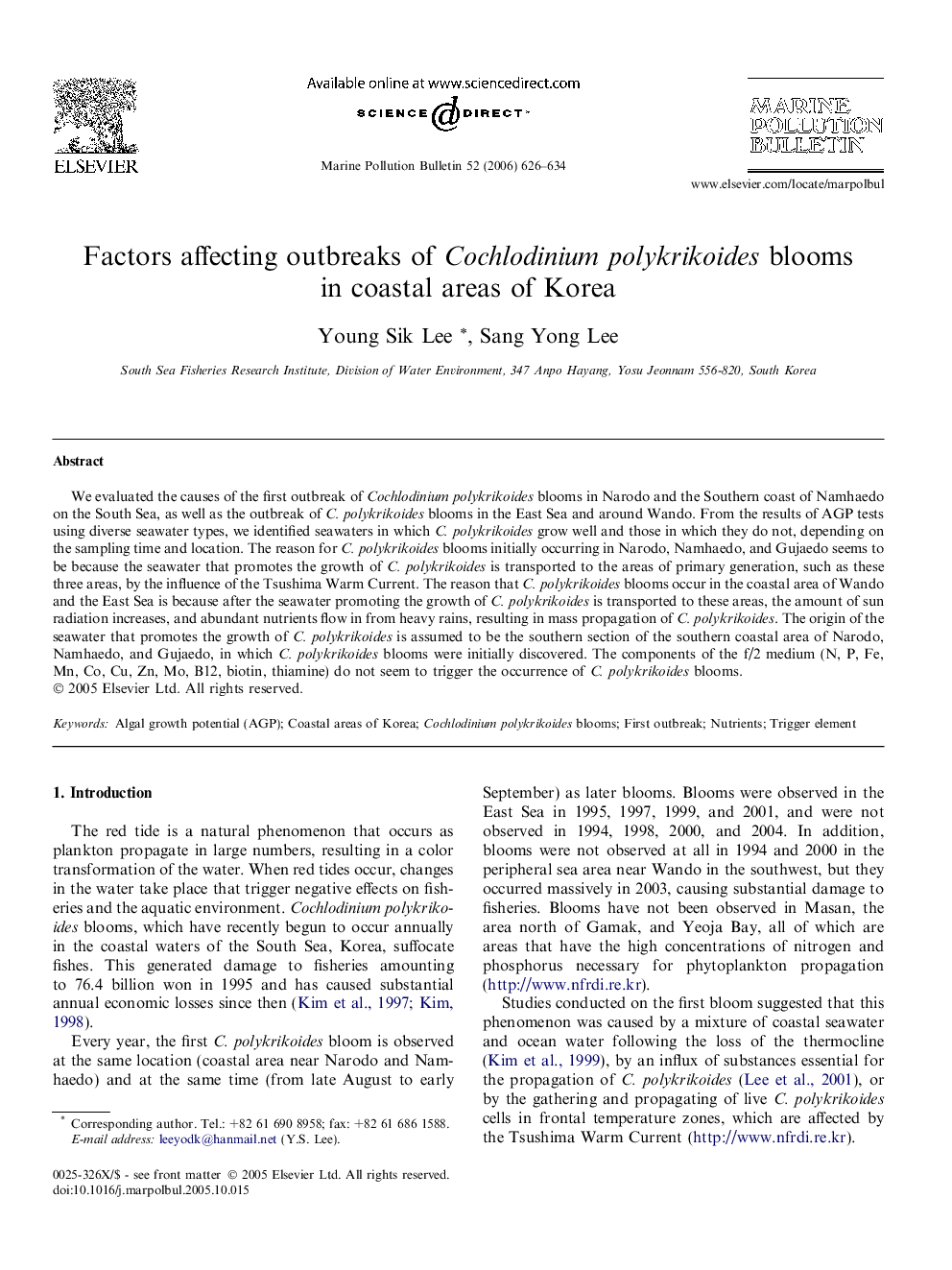| Article ID | Journal | Published Year | Pages | File Type |
|---|---|---|---|---|
| 4478006 | Marine Pollution Bulletin | 2006 | 9 Pages |
We evaluated the causes of the first outbreak of Cochlodinium polykrikoides blooms in Narodo and the Southern coast of Namhaedo on the South Sea, as well as the outbreak of C. polykrikoides blooms in the East Sea and around Wando. From the results of AGP tests using diverse seawater types, we identified seawaters in which C. polykrikoides grow well and those in which they do not, depending on the sampling time and location. The reason for C. polykrikoides blooms initially occurring in Narodo, Namhaedo, and Gujaedo seems to be because the seawater that promotes the growth of C. polykrikoides is transported to the areas of primary generation, such as these three areas, by the influence of the Tsushima Warm Current. The reason that C. polykrikoides blooms occur in the coastal area of Wando and the East Sea is because after the seawater promoting the growth of C. polykrikoides is transported to these areas, the amount of sun radiation increases, and abundant nutrients flow in from heavy rains, resulting in mass propagation of C. polykrikoides. The origin of the seawater that promotes the growth of C. polykrikoides is assumed to be the southern section of the southern coastal area of Narodo, Namhaedo, and Gujaedo, in which C. polykrikoides blooms were initially discovered. The components of the f/2 medium (N, P, Fe, Mn, Co, Cu, Zn, Mo, B12, biotin, thiamine) do not seem to trigger the occurrence of C. polykrikoides blooms.
